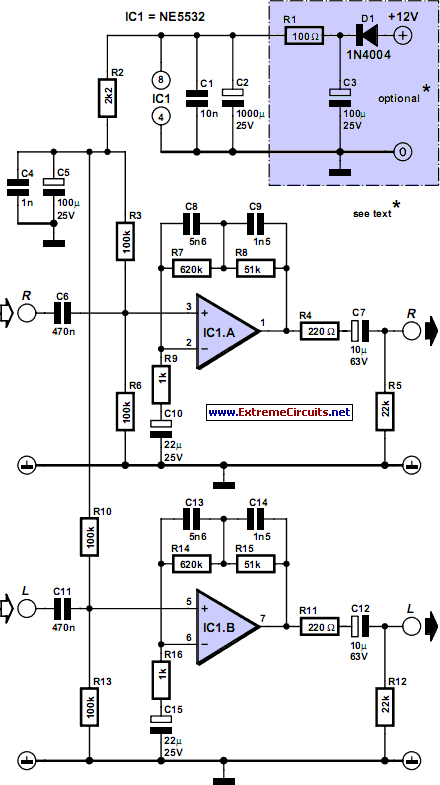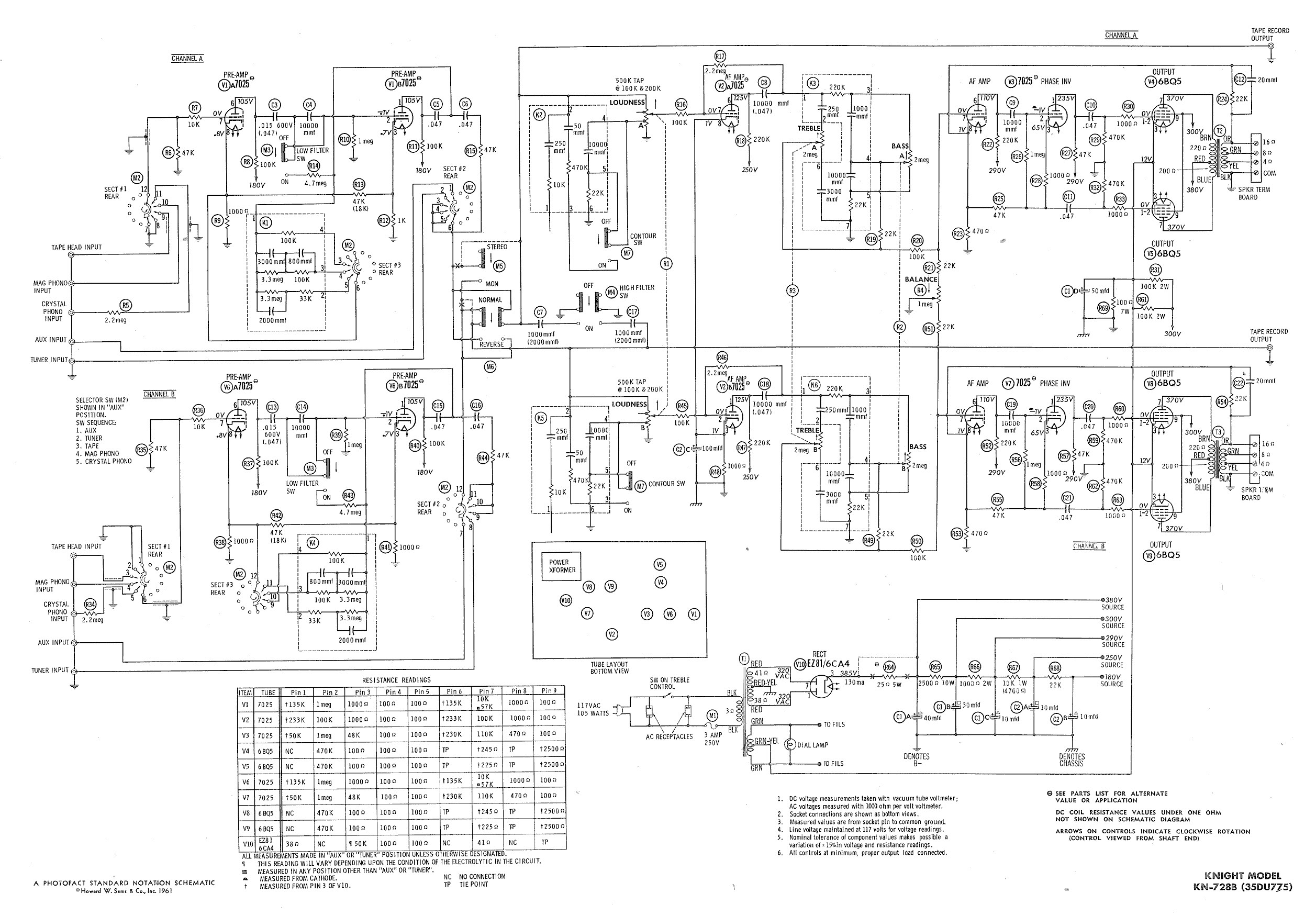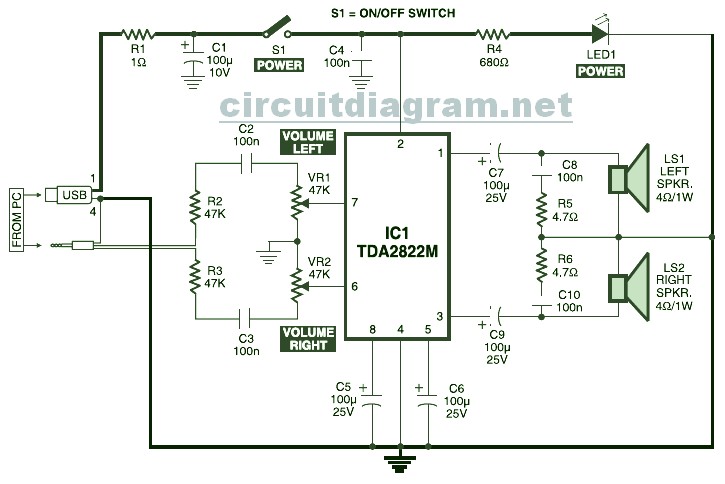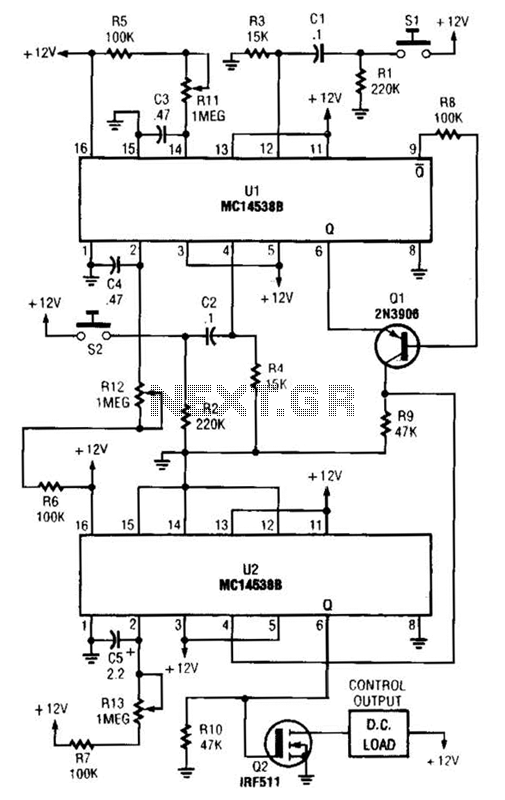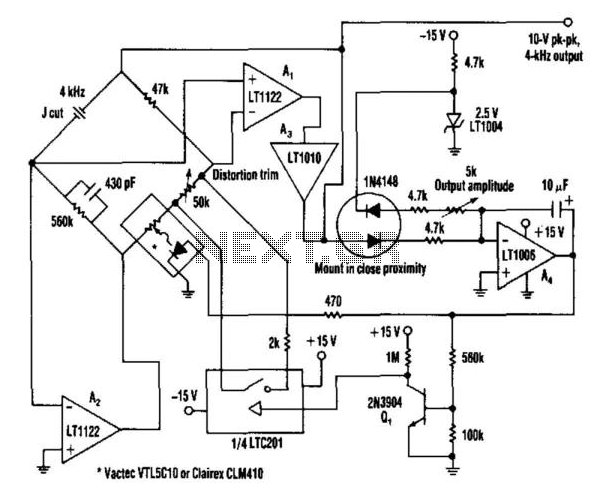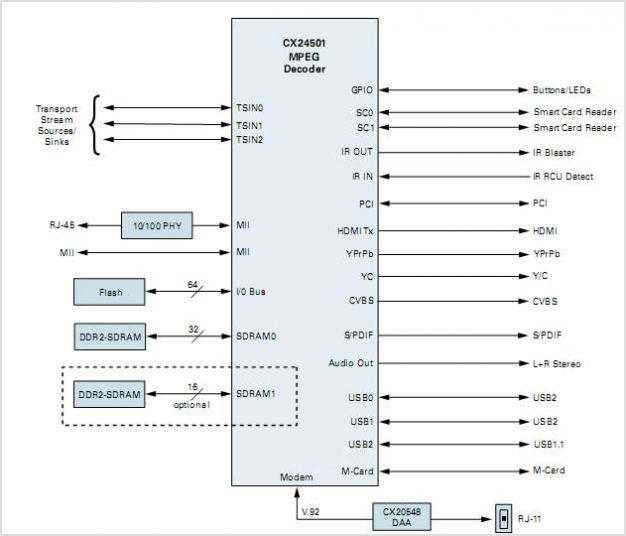
very useful timed beeper
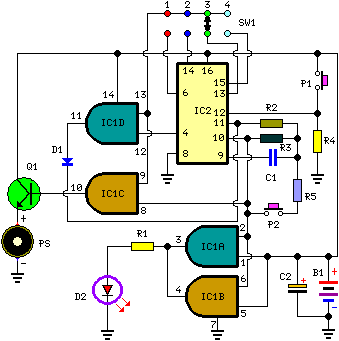
Pressing P1 resets IC2, which then begins oscillating at a frequency determined by R3 and C1. With the specified values, this frequency is approximately 4Hz. LED D2, controlled by IC1A and IC1B, flashes at the same oscillator frequency, indicating proper circuit operation. SW1 selects the corresponding pin of IC2 to adjust the timing duration. When the chosen pin of IC2 goes high, IC1C drives Q1, causing the piezo sounder to beep intermittently at the same frequency as the LED. After approximately 7.5 seconds, pin 4 of IC2 goes high, and IC1D halts the oscillator via D1. To stop the counting prematurely, press P2. SW1 can be any type of switch with the desired number of positions. For a single fixed timing duration, the switch can be omitted, and pins 9 and 13 of IC1 can be directly connected to the appropriate pin of IC2. The circuit's reset is not instantaneous. Pressing P2 forces IC2 to oscillate rapidly, but it may take several seconds to cease counting, particularly if a long timer delay has been selected and the button is pressed shortly after the circuit starts. To expedite the reset, lowering the value of R5 is an option; however, caution is advised, as a value that is too low may halt the oscillation.
The circuit utilizes an integrated circuit (IC) configuration that facilitates timing and sound generation through a combination of oscillation and control elements. The reset function is initiated by pressing switch P1, which triggers a reset on IC2, causing it to start oscillating at a frequency set by the resistor R3 and capacitor C1. The calculated oscillation frequency is approximately 4Hz, allowing for a slow flashing of LED D2, which serves as a visual indicator of the circuit's operational status.
SW1 plays a crucial role in determining the timing duration by selecting the appropriate pin on IC2. This flexibility enables users to tailor the timing based on their specific requirements. When the designated pin of IC2 transitions to a high state, it activates IC1C, which in turn drives transistor Q1. This action results in the piezo sounder emitting beeps that synchronize with the flashing LED, enhancing the circuit's auditory feedback.
The timing mechanism is designed to count for about 7.5 seconds, after which pin 4 of IC2 transitions high, signaling IC1D to disable the oscillator through diode D1. The circuit includes a provision for early termination of the counting process via switch P2, which, when pressed, compels IC2 to oscillate at a much higher frequency. However, it is important to note that the circuit does not reset instantaneously. Depending on the timer settings, there may be a delay before the counting ceases, especially if the button is pressed soon after the circuit initiation.
For applications requiring a fixed timing duration, it is recommended to bypass the switch and connect pins 9 and 13 of IC1 directly to the appropriate pin on IC2. Adjustments to R5 can influence the reset timing; reducing its value may hasten the reset process, but caution must be exercised, as excessively low values could disrupt the oscillation process. This circuit design effectively combines visual and auditory signals to provide feedback on timing operations, making it suitable for various timing and alert applications.Pushing on P1 resets IC2 that start oscillating at a frequency fixed by R3 & C1. With values shown, this frequency is around 4Hz. LED D2, driven by IC1A & B, flashing at the same oscillator frequency, will signal proper circuit operation. SW1 selects the appropriate pin of IC2 to adjust timing duration: When the selected pin of IC2 goes high, IC1C
drives Q1 and the piezo sounder beeps intermittently at the same frequency of the LED. After around 7. 5 seconds pin 4 of IC2 goes high and IC1D stops the oscillator through D1. If you want to stop counting in advance, push on P2. SW1 can be any type of switch with the desired number of ways. If you want a single fixed timing duration, omit the switch and connect pins 9 & 13 of IC1 to the suitable pin of IC2. The circuit`s reset is not immediate. Pushing P2 forces IC2 to oscillate very fast, but it takes some seconds to terminate the counting, especially if a high timer delay was chosen and the pushbutton is operated when the circuit was just starting.
In order to speed the reset, try lowering the value of R5, but pay attention: too low a value can stop oscillation. 🔗 External reference
The circuit utilizes an integrated circuit (IC) configuration that facilitates timing and sound generation through a combination of oscillation and control elements. The reset function is initiated by pressing switch P1, which triggers a reset on IC2, causing it to start oscillating at a frequency set by the resistor R3 and capacitor C1. The calculated oscillation frequency is approximately 4Hz, allowing for a slow flashing of LED D2, which serves as a visual indicator of the circuit's operational status.
SW1 plays a crucial role in determining the timing duration by selecting the appropriate pin on IC2. This flexibility enables users to tailor the timing based on their specific requirements. When the designated pin of IC2 transitions to a high state, it activates IC1C, which in turn drives transistor Q1. This action results in the piezo sounder emitting beeps that synchronize with the flashing LED, enhancing the circuit's auditory feedback.
The timing mechanism is designed to count for about 7.5 seconds, after which pin 4 of IC2 transitions high, signaling IC1D to disable the oscillator through diode D1. The circuit includes a provision for early termination of the counting process via switch P2, which, when pressed, compels IC2 to oscillate at a much higher frequency. However, it is important to note that the circuit does not reset instantaneously. Depending on the timer settings, there may be a delay before the counting ceases, especially if the button is pressed soon after the circuit initiation.
For applications requiring a fixed timing duration, it is recommended to bypass the switch and connect pins 9 and 13 of IC1 directly to the appropriate pin on IC2. Adjustments to R5 can influence the reset timing; reducing its value may hasten the reset process, but caution must be exercised, as excessively low values could disrupt the oscillation process. This circuit design effectively combines visual and auditory signals to provide feedback on timing operations, making it suitable for various timing and alert applications.Pushing on P1 resets IC2 that start oscillating at a frequency fixed by R3 & C1. With values shown, this frequency is around 4Hz. LED D2, driven by IC1A & B, flashing at the same oscillator frequency, will signal proper circuit operation. SW1 selects the appropriate pin of IC2 to adjust timing duration: When the selected pin of IC2 goes high, IC1C
drives Q1 and the piezo sounder beeps intermittently at the same frequency of the LED. After around 7. 5 seconds pin 4 of IC2 goes high and IC1D stops the oscillator through D1. If you want to stop counting in advance, push on P2. SW1 can be any type of switch with the desired number of ways. If you want a single fixed timing duration, omit the switch and connect pins 9 & 13 of IC1 to the suitable pin of IC2. The circuit`s reset is not immediate. Pushing P2 forces IC2 to oscillate very fast, but it takes some seconds to terminate the counting, especially if a high timer delay was chosen and the pushbutton is operated when the circuit was just starting.
In order to speed the reset, try lowering the value of R5, but pay attention: too low a value can stop oscillation. 🔗 External reference
